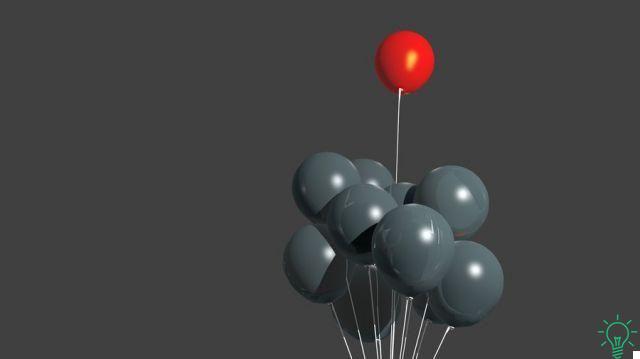Crises in a stable couple coincide with the end of a phase and the beginning of a new one. They are an opportunity to reevaluate the relationship and decide whether it is better to keep it or end it.

Last update: July 18, 2022
Crises in a stable couple, large or small, are completely normal as a long relationship faces several significant changes over the course of its evolution. These crises can make the couple reflect on the future that awaits them together, as well as investing resources in the analysis of the present dynamics.
You can also be overwhelmed by anxiety and insecurity, especially if you tend to doubt your decisions. Crises in a stable couple, after all, are natural. While they create instability and insecurity, they also represent an opportunity for growth.
In these phases, unresolved accounts and unresolved conflicts can emerge. It is up to the couple to decide whether they can resolve the issue and turn it into an opportunity or whether to walk away. In general, the crises in the stable couple occur after the completion of specific phases.
For this reason, these moments of instability are usually classified according to the time the couple has spent together. From this point of view, we can distinguish four great critical moments: after one year, after three years, ten years and the empty nest.
"At the beginning of a love, lovers talk about the future, its consequences, the past."
-André Maurois-
The 4 crises of a stable couple
1. The one-year crisis, the end of limerence
Limerence is a concept coined by Doctor Dorothy Tennov, in her work Love and Limerence: The Experience of Being in Love, published in 1977. Limerence is defined as that romantic and obsessive state, in which there is a strong attraction to a other person and a very intense desire to be reciprocated.
The end of limerence usually leads to the first crisis in a stable couple and this happens about a year together, or a year and a half after the relationship begins. The main feature is that the idealization of the partner begins to fade.
You begin to see the defects of the partner and you have the desire to recover their spaces, set aside as a result of the relationship. Many relationships end at this point if there is no solid bond at the base.
2. Three years: the second crisis in a stable couple
The second crisis in a stable couple occurs around three years or so. In reality, this timing is completely approximate. In any case, the desire to move on to the next level usually appears at this stage.
If we do not yet live together, this level will be represented by coexistence. If not, the idea of having children may appear on the horizon. What hangs in the air is the need to increase commitment. To formalize, so to speak, the existing link.
At that point, the relationship is reevaluated and the result is that you actually take it to the next level or a breakup occurs because one or both of them don't feel ready for that step.
3. The 10-year crisis
The ten-year crisis tends to focus on two fundamental aspects: children and the intimate sphere. As for the children, it is at this stage that couples turn their attention to them and compare parenting styles. More than in terms of a couple, we think in terms of family.
The sexual sphere, on the other hand, has faded into the background. Doubts and disagreements arise, therefore, because they both desire feeling attractive again and that sexuality is once again at the center of the relationship. This cocktail of emotions can lead to a rebirth of the relationship or signal its end.
4. Crisis in a stable couple: the empty nest
Couples who have managed to successfully overcome coexistence and achieve balance in the relationship face a "last crisis". It is called empty nest syndrome and occurs when children grow up and leave home. At that point, the couple should focus on the relationship again and this may not be that easy.
We have changed and we recognize ourselves in family roles, but individually we could feel a certain mutual extraneousness without the presence of that filter that is the children. It is then that you have to reinvent the relationship to continue or decide that you no longer have anything in common and it is time to embark on an individual journey.
Conclusions
Crises in a stable couple are also opportunities to reevaluate the relationship. It is necessary to reflect on whether it is appropriate to continue or, vice versa, to put an end to the relationship. If you are not driven by impulse and carefully consider your decisions, you will probably choose the best option.


























